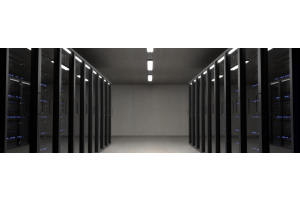How Wi-Fi 6 Range Extenders are Transforming Home Networks for Seamless Coverage?

Since the introduction of today’s IEEE 802.11 Wi-Fi standards in 1997, this technology continues to impress users with enhanced mobility, convenience, cost-effectiveness, and easy installation. Over the years, this technology has evolved as several sophisticated standards have been introduced to the audience, one of the latest models widely used is WiFi 6. Technically dubbed as the 802.11ax, WiFi 6 shows significant improvements in power consumption, battery life, network security, data transfer speed, beamforming, OFDMA, MU-MIMO, and many other areas. In this article, we will see how WiFi 6 range extenders are transforming home networks and offering seamless coverage.
We first start by understanding the basics.
What is WiFi 6:
WiFi 6 is a wireless computer network operating in 802.11ax standard. It is the successor of 802.11ac (WiFi 5) and shows huge improvements in terms of speed and other areas. This makes them suitable for high-density environments such as shopping malls, corporate offices, buildings, and more.
Introduced in 2019, WiFi 6 supports standard 2.4GHz and 5GHz frequencies and 6GHz has been introduced in WiFi 6E.
Comparison Table for WiFi 4, WiFi 5, WiFi 6, WiFi 6E and their features:
|
Feature |
WiFi 4 (802.11n) |
WiFi 5 (802.11ac) |
WiFi 6 (802.11ax) |
WiFi 6E (802.11ax with 6 GHz) |
|
Frequency Bands |
2.4 GHz, limited 5 GHz support |
5 GHz only |
2.4 GHz + 5 GHz |
2.4 GHz + 5 GHz + 6 GHz |
|
Maximum Speed |
Up to 600 Mbps |
Up to 3.5 Gbps |
Up to 9.6 Gbps |
Up to 9.6 Gbps with enhanced performance on 6 GHz |
|
MU-MIMO |
Not supported |
4×4 MU-MIMO (unidirectional) |
8×8 MU-MIMO (bidirectional) |
8×8 MU-MIMO optimised for interference-free 6 GHz |
|
OFDMA |
Not supported |
Not supported |
Handles simultaneous device traffic |
Enhanced for seamless multitasking on 6 GHz |
|
Beamforming |
Basic beamforming |
Standard beamforming |
Advanced beamforming for better range and efficiency |
Precision-targeted beamforming in the 6 GHz band for superior performance and power efficiency. |
|
Latency |
Moderate |
Moderate to low |
Low latency |
Ultra-low latency for AR/VR, gaming, and real-time use |
|
Security |
WPA/WPA2 |
WPA/WPA2 |
WPA3 |
WPA3 enhanced for 6 GHz privacy and encryption |
|
Power Efficiency |
Standard |
Standard |
Target Wake Time (TWT) saves power |
Advanced TWT for IoT and mobile efficiency |
|
Device Density Handling |
Struggles with multiple devices |
Handles medium density |
High-density environments |
Excels in ultra-dense settings with extra 6 GHz lanes |
|
6 GHz Band |
Not supported |
Not supported |
Not supported |
Exclusive 6 GHz access for reduced interference |
|
Ideal Use Cases |
Basic browsing, streaming |
HD streaming, online gaming |
Smart homes, 4K streaming, IoT |
8K streaming, AR/VR, IoT, smart cities, high bandwidth |
How WiFi 6 Range Extenders Transforming Home Network:
WiFi Range extenders supporting WiFi 6 standards have become an integral part of modern networking. When we make WiFi 6 vs WiFi 5 or WiFi 6 vs WiFi 4 comparison, we come to know that the benefits of WiFi 6 and 6E are numerous.
For instance:
• Faster Speed:
Theoretically speaking the maximum data transfer rate that WiFi 6 can support is 9.6 Gbps across multiple channels. Although theoretically speed can never be achieved, devices using WiFi 6 range extenders enjoy significantly faster speed than WiFi 5 range extenders which can support up to 3.5Gbps speed.
What’s more, WiFi 6 has 75% reduced latency because it handles network traffic more effectively. It leads to better multimedia tasking and improved downloading and uploading speed for gamers.
• Improved Beamforming Technology:
WiFi 6 range extenders also feature improved beamforming technology that leads to enhanced data transfer. This is futurist technology that enables routers to locate the specific device that is requesting data. Therefore, instead of throwing data in all directions, the router sends data in a specific direction, saving bandwidth and enhancing the overall data transfer rate.
• Latest Security Protocols:
WiFi 5 features enhanced security protocols such as WPA and WPA2 protocols for a secure connection. However, these protocols have become vulnerable to various cybersecurity threats. WiFi 6 has stepped up the security level, incorporating the latest WPA3 security protocol. Now WiFi 6-connected or enabled devices feature WPA2 and WPA3 protocol, offering multi-factor authentication and encryption processes.
• 8×8 MU MIMO Technology:
MU MIMO or Multi-User, Multiple Input, Multiple Outputs is the latest WiFi technology that allows more than one user to communicate with a router at a time. WiFi 5 employs unidirectional 4×4 MU-MIMO. This means that a certain number of users can access routers. When the number of simultaneous transmissions exceeds 4, the network becomes crowded and network speed slows down considerably.
Unlike WiFi 5, WiFi 6 range extenders support 8×8 MU MIMO technology. It enables them to handle up to 8 devices at a time through LAN wireless without any interference from other devices. What’s more, WiFi 6 is bidirectional, which means peripheral devices can connect to a router at any band, leading to improved uploading speed and enhanced data transfer rate.
• Dual Frequency Bands:
Unlike WiFi 5 which supports only the 5GHz band, it offers many advantages such as less interference from other devices. But WiFi 5 signals employing 5GHz have a shorter range and they are unable to penetrate walls and other obstacles.
WiFi 6 on the other hand relies upon both 2.4 GHz and 5GHz frequencies. Devices using WiFi 6 standard can automatically scan which frequency is best suited for them. You can get the best of both worlds, better speed when the close range is beneficial and robust, and long-distance coverage when peripheral devices are not within the same range.
WiFi 5 vs. WiFi 6 Mesh: Which One Best Serves You Need?
In terms of speed, efficiency, and capacity, WiFi 6 Mesh is advanced and more suitable for large homes and workplaces. They are capable of supporting high data rates, allowing them to provide enough bandwidth to multiple devices simultaneously.
WiFi range extender-enabled Mesh networks are therefore recommended for demanding tasks such as 4K video streaming, managing IoT devices, and online gaming.
How Can We Help You?
Morgan Ingland Ltd. is one of the most prominent IT firms in the UK, specializing in offering the widest range of networking equipment including routers, modems, WiFi range extenders, network cables, and more. We deal in every brand manufacturing WiFi range extenders such as TP-Link, Netgear, D-Link, Linksys, and more.
Contact us and enhance your internet experience with our top-rated and cost-effective WiFi Signal Boosters.









